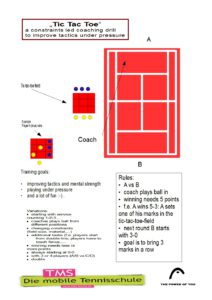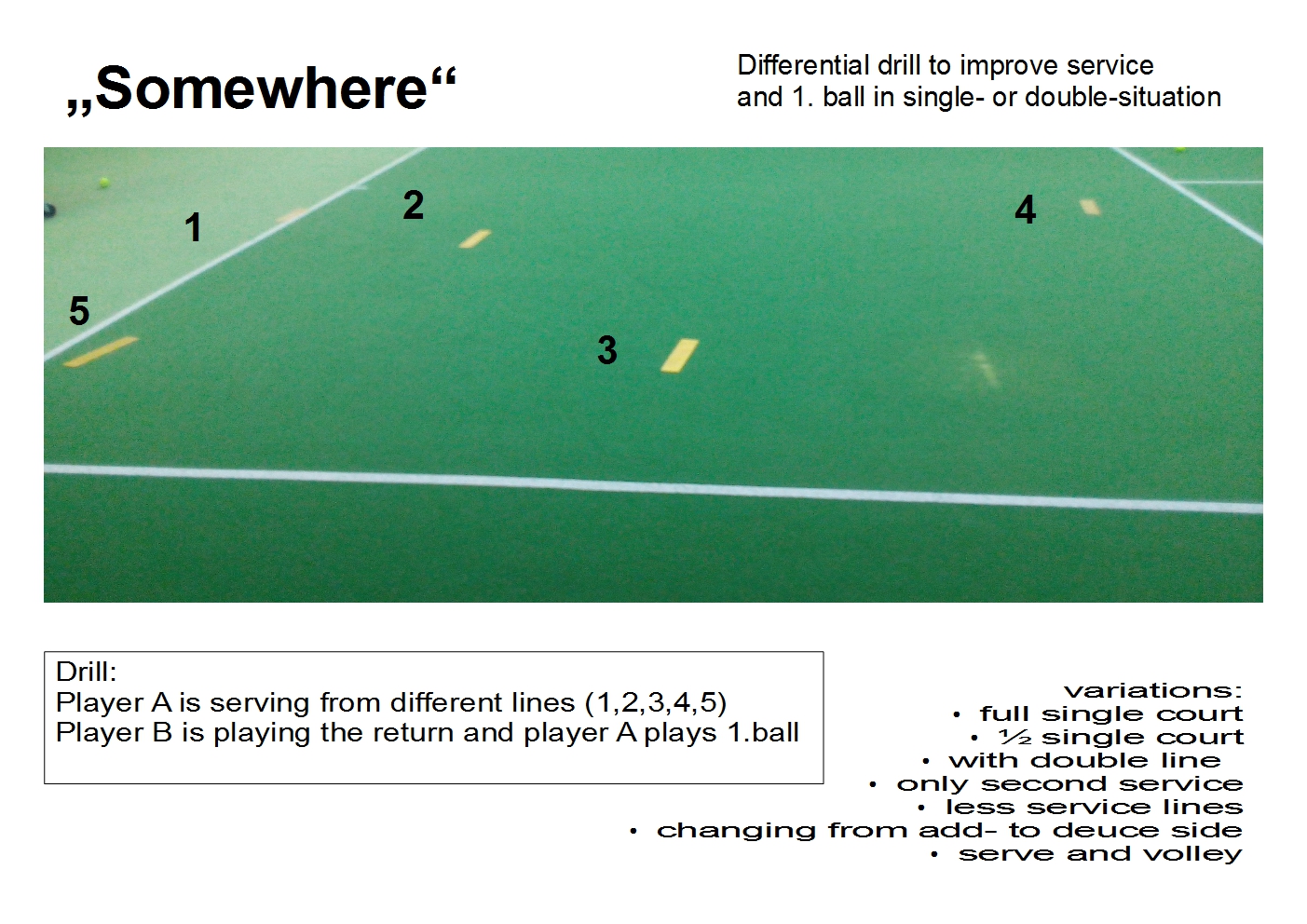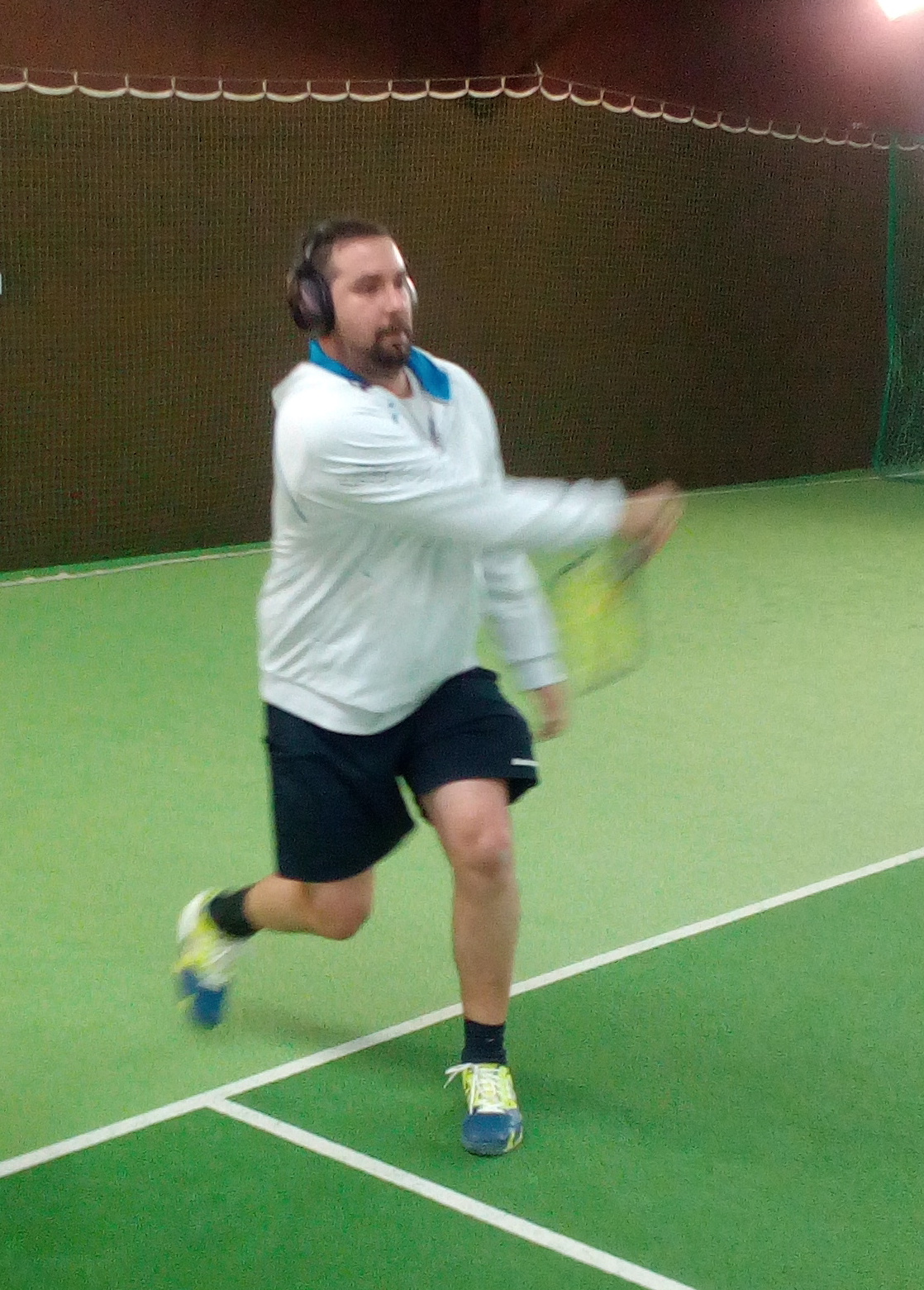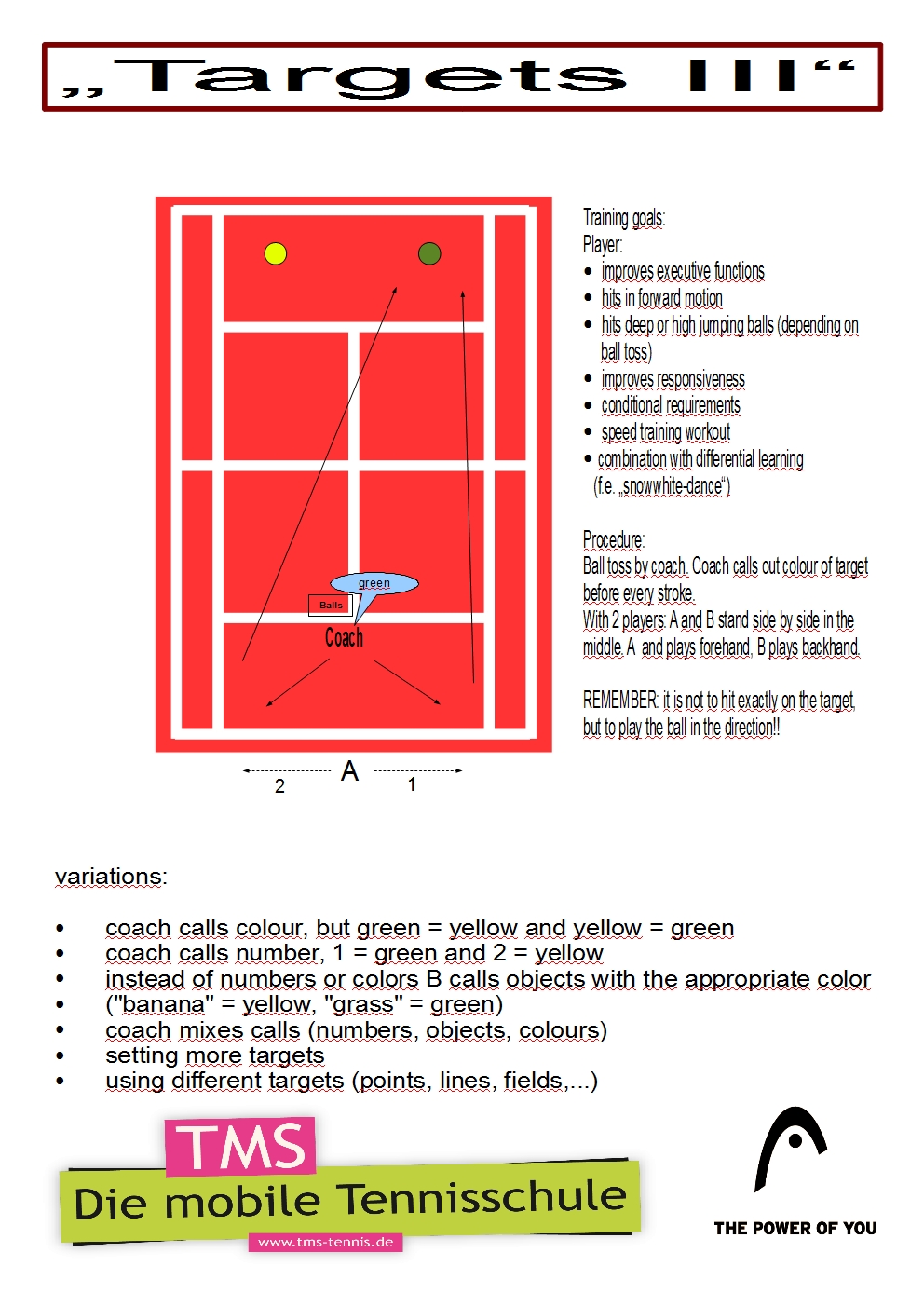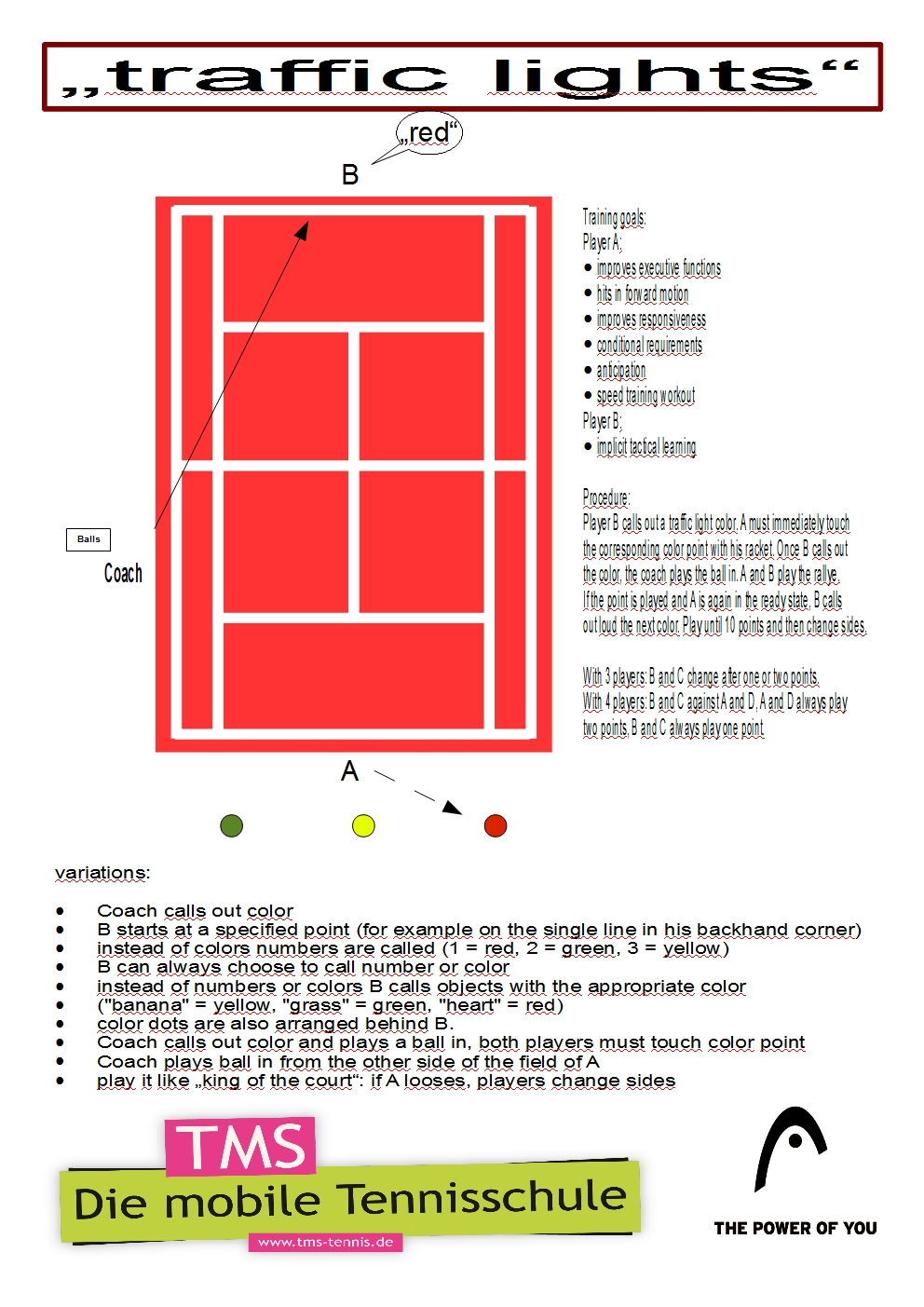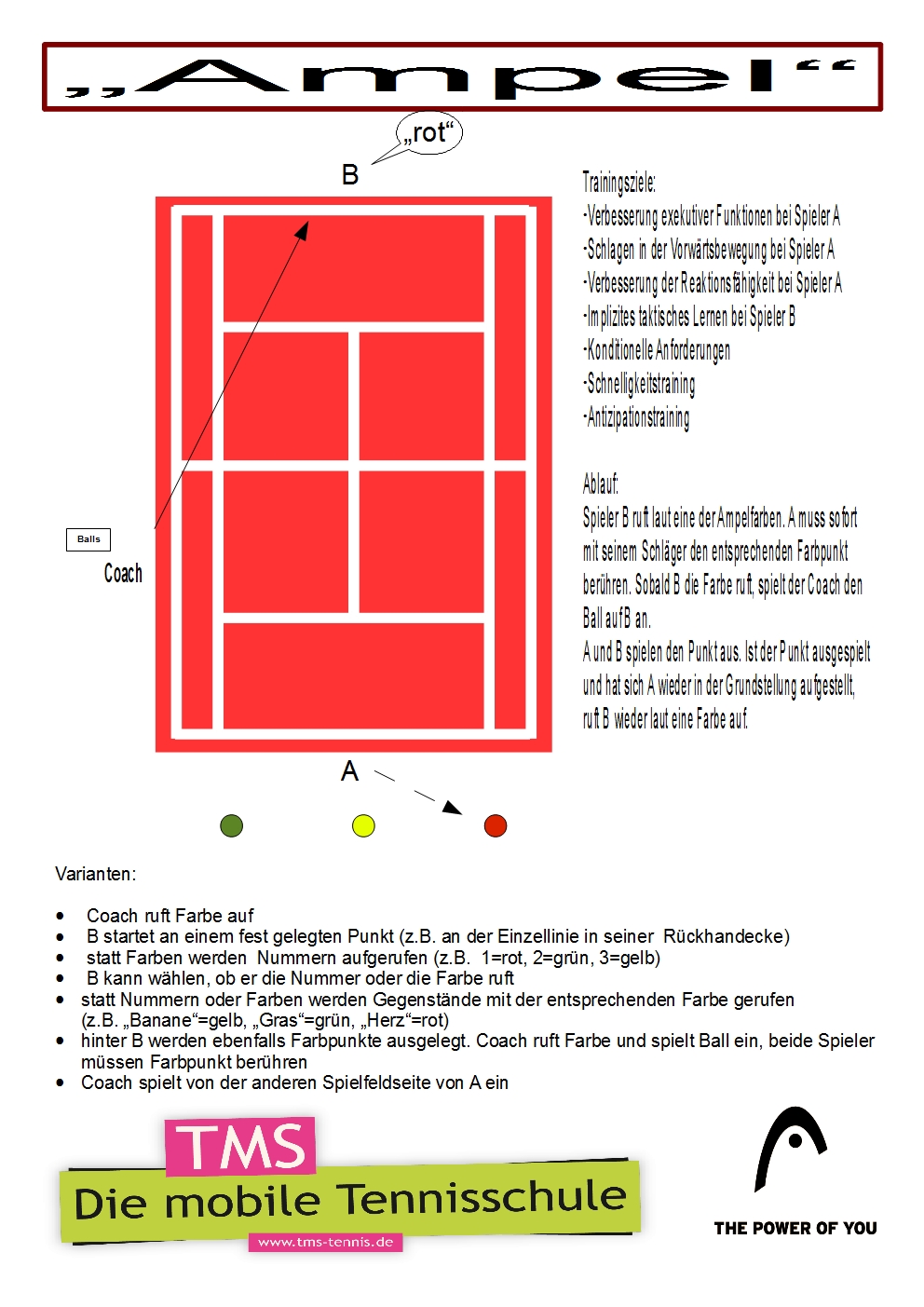Constraints led coaching and differencial learning needs changing situations. The most common situation in a coaching drill is that the coach ist playing the ball in. Some coaches seem to be fixed to their places. We can use the cue for a lot of differencial situations.
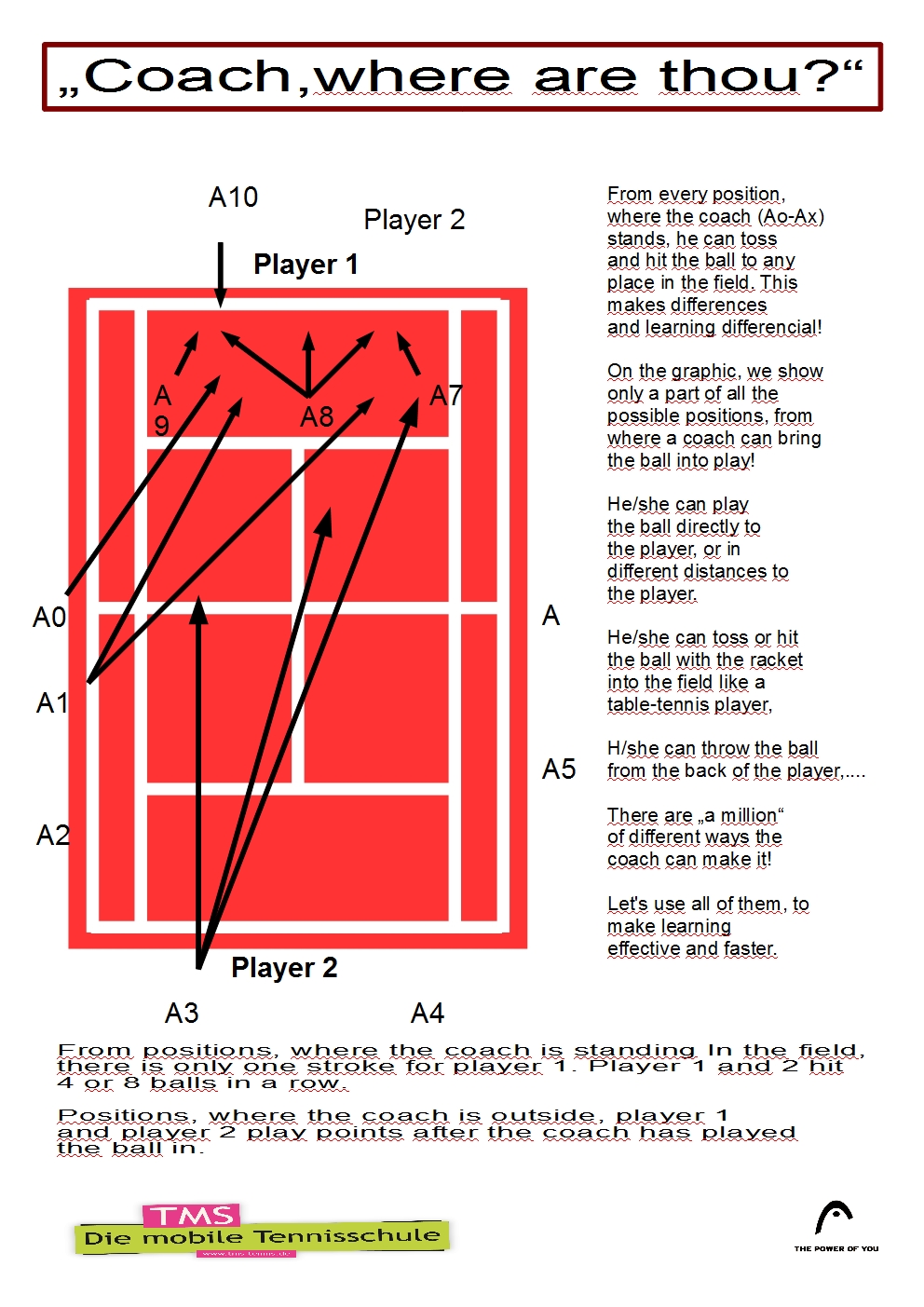
Sometimes it takes only a little bit of imagination to develop new drills that satisfy the requirements of an „evidence based coaching“.
Or how Holger Geschwindner would say: „Practised nonsense“!
In every course for future coaches, they are instructed to think about their position from where to hit or toss the ball into play. As a rulle, it is to start the rally with a proper gaming face-off and the rest are „no go“ positions, corresponding to textbook positions.
The so-called „spanish drills“, where coaches work with the ball-toss from most diverse positions, already suggests that there are other ways. This was always differential, and was practiced without the, at that time not yet available scientific background.
This drill „Coach where are thou?“ shows some of the possible positions from where the coach can bring the ball into play in many different ways or from many different positions.
Manchmal braucht es nur ein bißchen Phantasie, neue Drills zu entwickeln, die den Voraussetzungen eines „evidence based coachings“ genügen.
Oder wie Holger Geschwindner sagen würde: „Praktizierter Unfug“!
Eine solche Idee ist der Drill, der eigentlich aus einer ganzen „Batterie“ von Drills besteht.
In jeder Trainer-Ausbildung werden die zukünftigen Coaches angeleitet, sich über die Position beim Anspiel Gedanken zu machen. In der Regel geht es dann darum, den Ballwechsel mit einem spielgerechten Anspiel zu beginnen und es gibt vermeintliche „no go“-Positionen und dem Lehrbuch entsprechende Trainerpositionen für das Anspiel.
In den sogenannten „spanish drills“, bei denen sehr viel mit dem Zuwurf von Bällen aus den unterschiedlichsten Positionen gearbeitet wird, deutet sich schon an, dass es auch andere Wege gibt. Hier wurde schon immer differenziell, auch ohne den damals noch nicht vorhandenen wissenschaftlichen Hintergrund gearbeitet.
Der folgende Darstellung des Drills „Coach where are thou?“ zeigt nur einige der möglichen Positionen, von denen der Coach den Ball auf die unterschiedlichste Weise anwerfen oder einspielen kann.
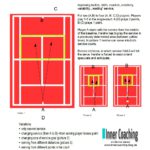 Changing constraints and using non-linear pedagogy for skill development.
Changing constraints and using non-linear pedagogy for skill development.